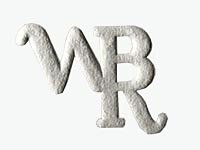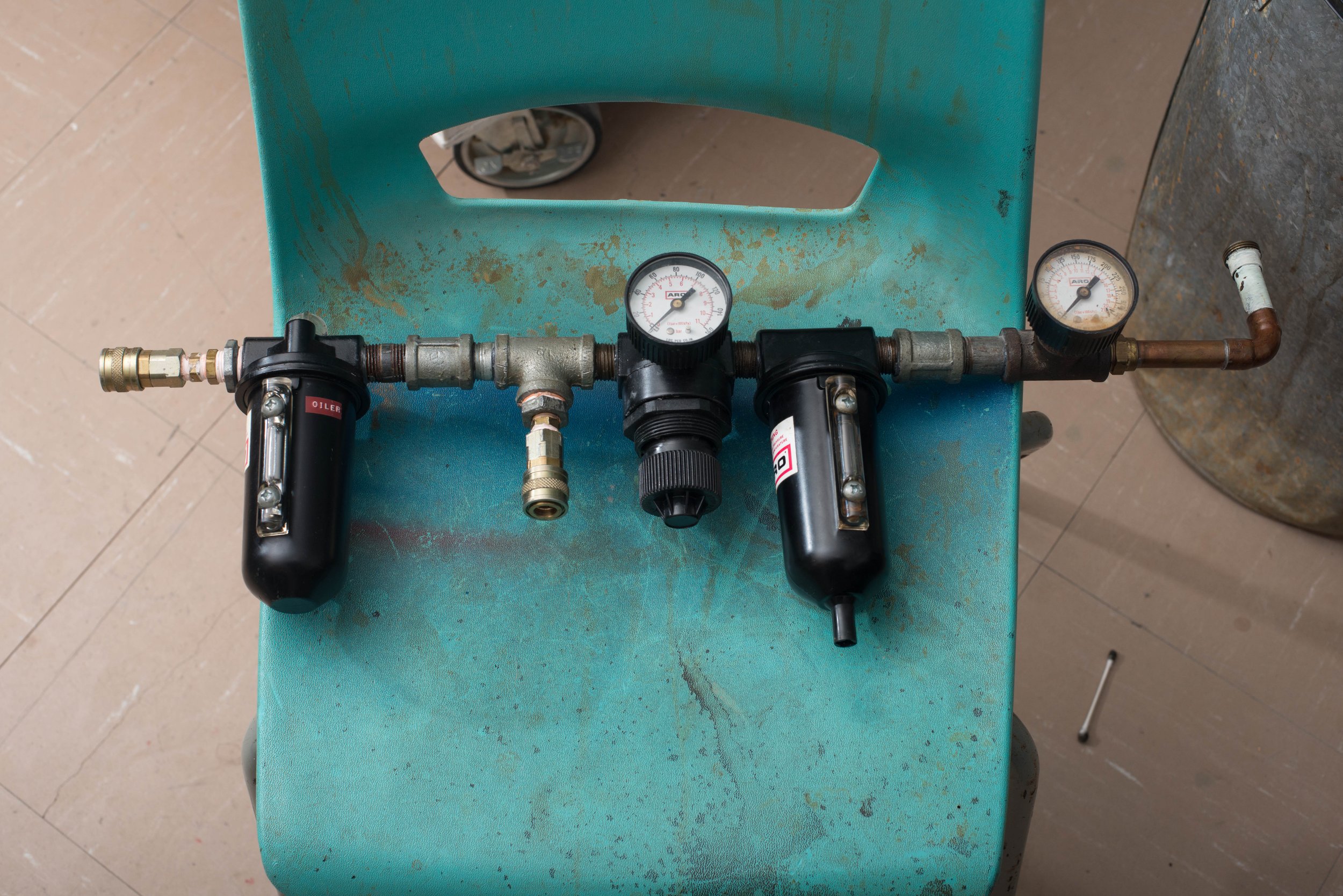Graining stones, the pneumatic levigator
Graining lithographic stones properly is critical. Basically you must use a piece of one inch steel plate with an offset handle, swirl it around in a prescribed and controlled manner over the surface of the lithographic stone. Takach Press makes some very nice ones.
What I’d like to talk about is the pneumatic levigator. The first pneumatic levigator I ever saw was when I was a student at the Nova Scotia College of Art and Design back in the mid 70’s. Our instructor Bob Rogers had designed and built it to deal with a more efficient way to “dress” large lithographic limestone blocks. It was a terror to operate in the beginning, noisey and one had to be careful that you didn’t bring it too close to the edge of the stone as it would then launch itself off the stone onto the metal bars of the graining sink and beyond.
Instead of the offset handle of a manual levigator there was a 1/2” female socket welded to the centre of a 1/2-3/4” circular metal plate. A 1/2 male socket is mounted to the air motor. The motor was made by The Aro Corporation in Bryan Ohio, the serial number (on this newer pictured version) is SN 41774B88 and the RPM is 350. The motor has to have a reduction gear installed so it rotates slow enough to be able to control. They no longer manufacture this model but they do have other motors that would work just as well.
The third photo you can see the air intake controls and filtration. What you can’t see is the compressor that you’ll need to generate air to push through the lines that will in turn drive the motor. The air comes from the right to the left and passes through a water separator (compressed air makes moisture especially in the arctic). Cold air gets put under pressure and then it travels into warmed air lines and into the first chamber where the moist air leaves most of the water. There is a little nipple on the bottom of the first chamber that is used to manually remove any build up of water.
The air then goes through the next chamber where an oily mist is introduced to the air to counter any excess moisture that remains in the air. The purpose of this is to oil the motor and prevent it from rusting on the inside. This is all a pretty good plan if you’d be using the air motor to drive a die grinder or the like but us lithographers oily air equals trouble. At one point someone drained the oil from the oiler which solved one problem but introduced another.
In the first photograph you’ll see a stainless steel cylinder on the right side of the main body (black cylinder) between it and the aluminum metal handle, this is the air filter. This is supposed to filter out oily air that exits from the engine as it is working. We found that over the length of time we needed to grain large stones that the filter would allow oil to splatter out onto the surface of the wet stone, not always, but often enough. We eventually took to wrapping the filter with a cotton rag at first just to see if in fact this was happening and then later when we determined that it was happening, to collect the oil from getting on the stone.
After all the effort of graining our largest stones the last thing you want is oil polluting the matrix. Normally we would use the pneumatic levigator with the coarsest grits, 45, 80 sometimes 100RA but after that we’d use smaller stones with 150-220 just to be certain we weren’t scratching the surface. The pneumatic levigator certainly makes quick work of the graining process but it doesn’t transmit the same tactile sensations you have with even the manual steel levigator. A stray 45 grit on your apron, a thin chip of stone from an overly sharp edge, will all spoil your work and you cannot hear nor can you feel it happen with the noise or the air motor combined with the ring of the metal plate gnashing over the carborundum grits so BEWARE.
The last photo showing the filters, we plumbed two quick disconnect attachments, one for the levigator and the other for an air hose which we found useful for blasting the surface of the stone to remove stray stone dust and errant grit particles. We routinely washed off our rubber graining aprons, the tops of the levigator, the sides of the stone and anywhere else stray grit might hide, you can never be too careful.
The pressure gauges allow you to control how much air is getting to your motor.
When we moved from the old print shop to the new print shop we considered buying a new pneumatic levigator but instead we installed this old one. We routinely cleaned the air out oil filter and maintain the water removal chambers and oiler chambers. The new Kenojuak Cultural Centre Print Shop has air plumbed throughout the entire shop so we no longer have the issue with the cold air coming into the system and the water filter is at the head of the system which removes any water a long ways away from our levigator.
front of levigator
rear of levigator
Inline filtration and oiler



